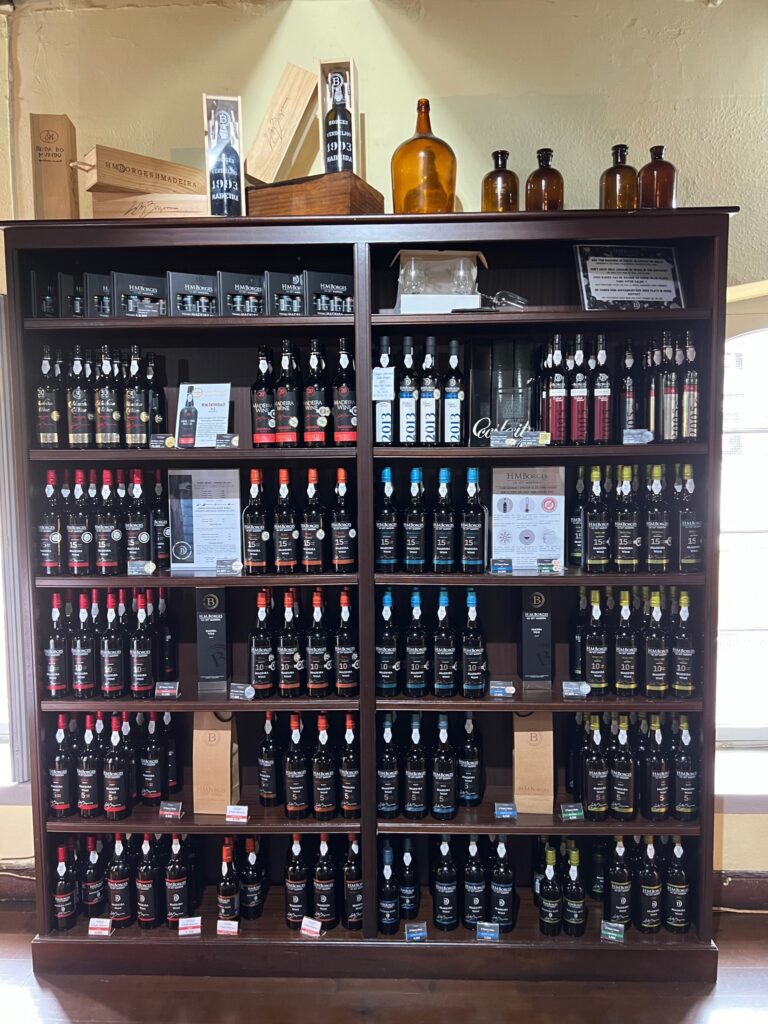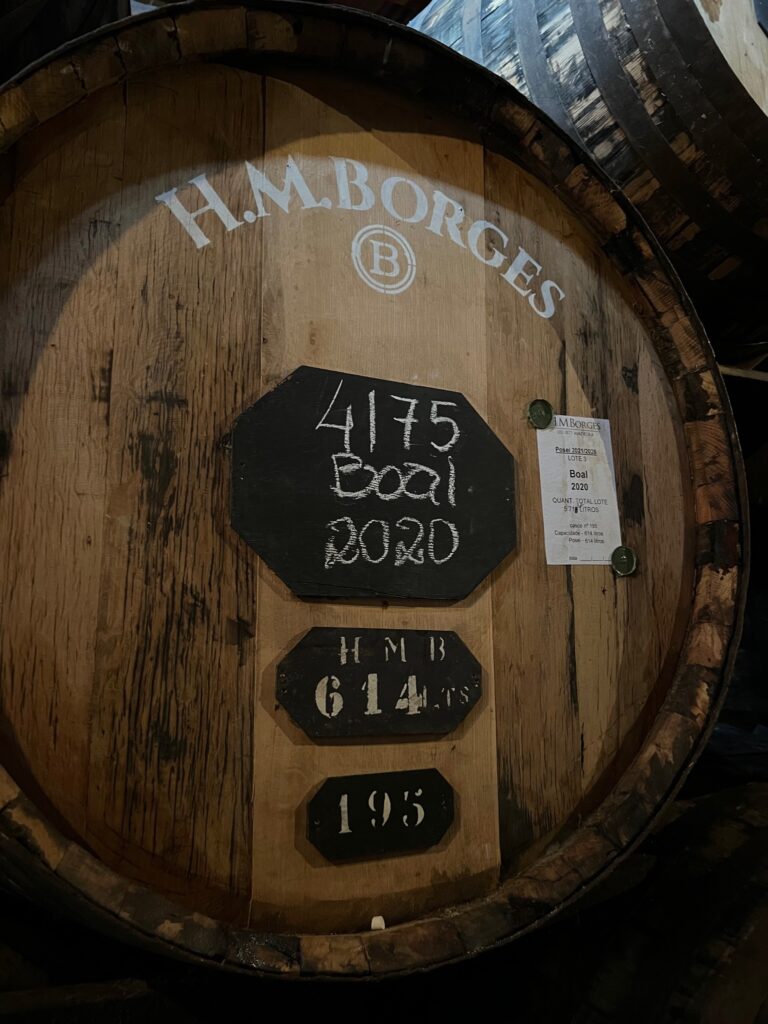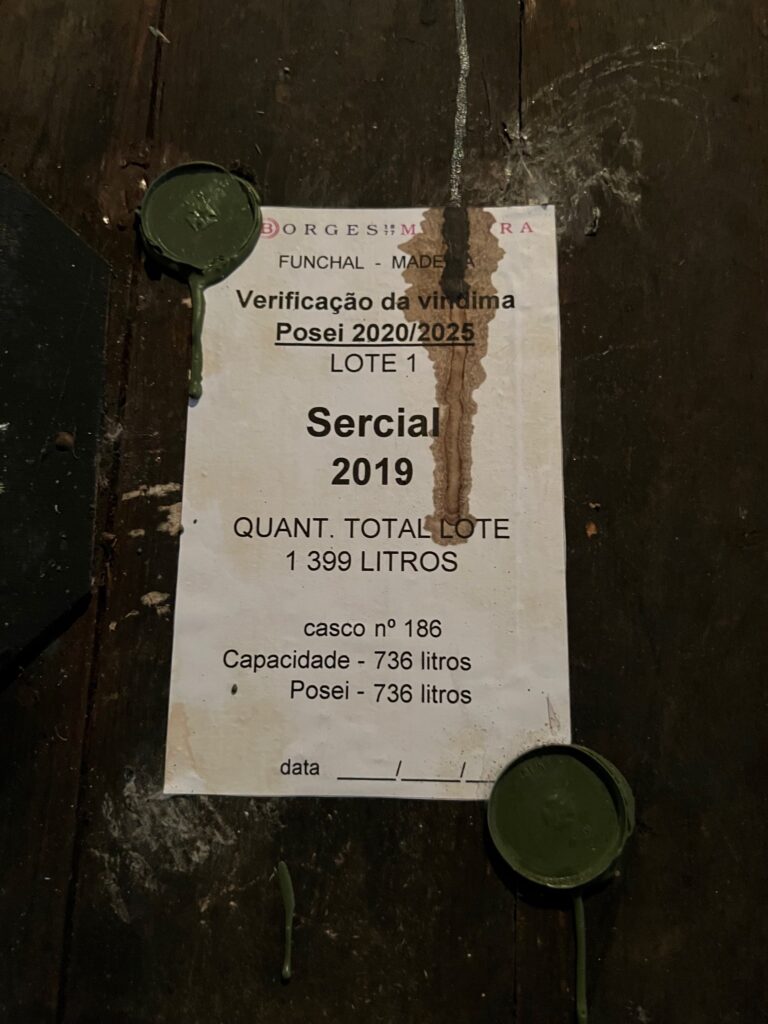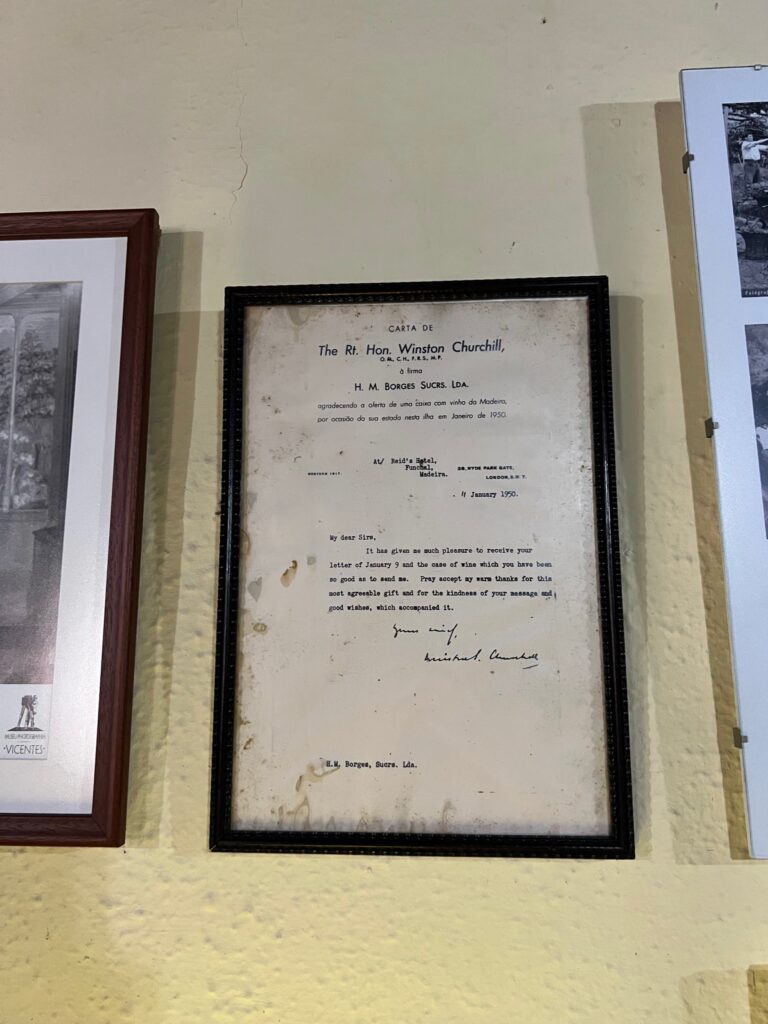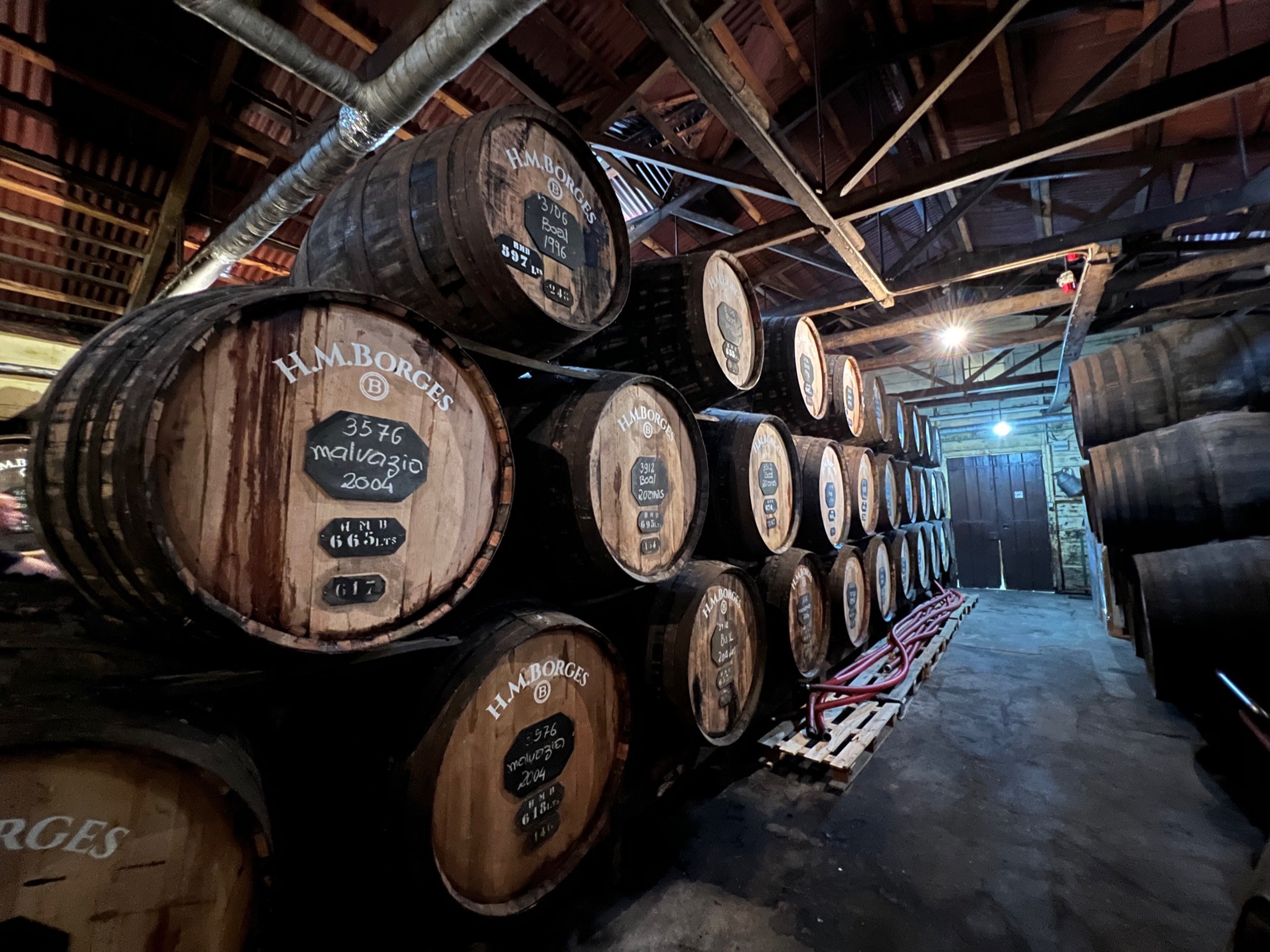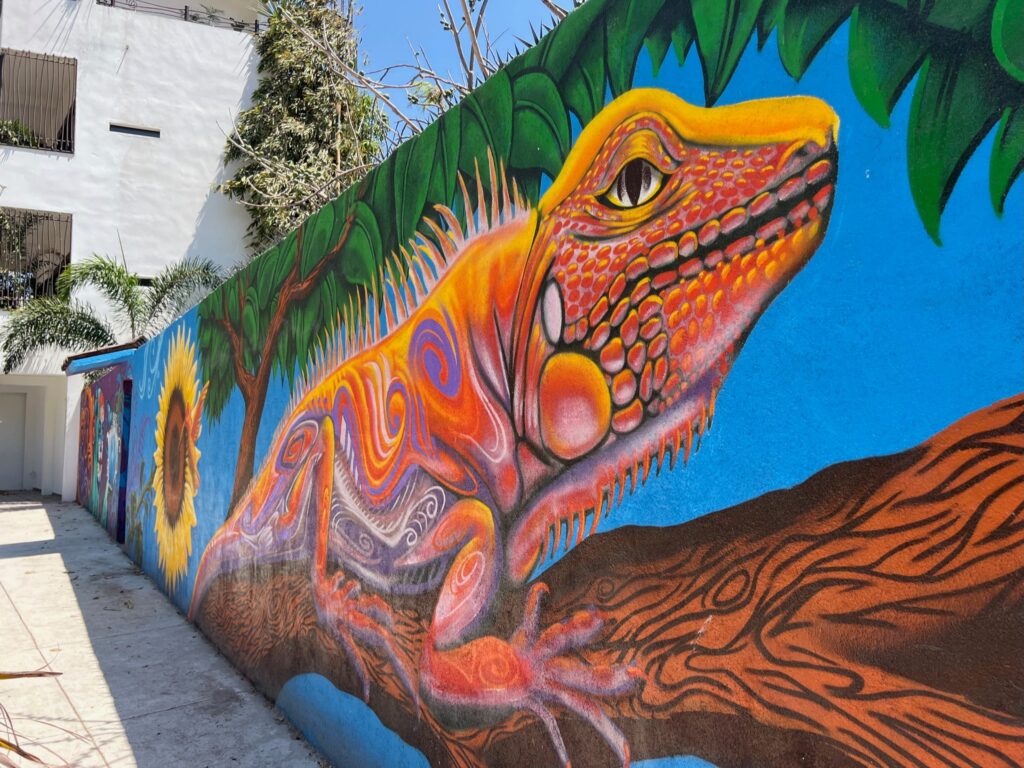Two things I knew about Madeira before I considered traveling here – wine and pirates. I’m not planning to go for a sail on the touristy pirate boat – even though the sign says that it is a life-changing experience. Does it change your life in that you may drop everything and decide to become a pirate? I guess I would need to take that tour to know for sure.
A tour of a Madeira winery, though possibly not life-changing, seems more our style. And HM Borges (https://www.hmborges.com/) is right down the street. Tours happen three times a week (Monday, Wednesday, Friday) at 2:30pm and are by appointment only. They are only 30 minutes so I decided it was okay to squeeze it in even though it is smack dab in the middle of the work day.
When I popped in to book it a few weeks ago – I was asked whether I wanted the silver, gold or diamond tour. It all depends on how many different samples of wine you want at the end of the tour. Since it is fortified wine and technically 9:30 in the morning of a work day – I opted for the silver option which included two sample glasses. (Gold is four and diamond is six.) I chose Friday because that seemed like a more acceptable day to be drinking mid work-morning 🙂
Our tour guide’s name was Anna and she was gorgeous and charming. She spoke English with lots of Portuguese words peppered in and the rest of the time with the most endearing accent. Her face was fascinating and expressive. I can’t say that I arrived with a burning thirst for knowledge about Madeira wine (or even for the actual wine itself) but she won me over to thinking of it as something that should be treasured. Or at least she made me feel a little ashamed of the fact that the only time I had purchased Madeira wine in the past was for a gravy recipe.
Here’s what I learned about the process of making Madeira wine.
It can be made from 5 different types of grapes – both red and white. They are harvested from different areas of the island and at different altitudes. The grapes ferment like regular wine and it is also fortified with added alcohol. If the wine is going to be sweet – the alcohol goes in at the beginning of the fermentation process and dry it goes in at the end.
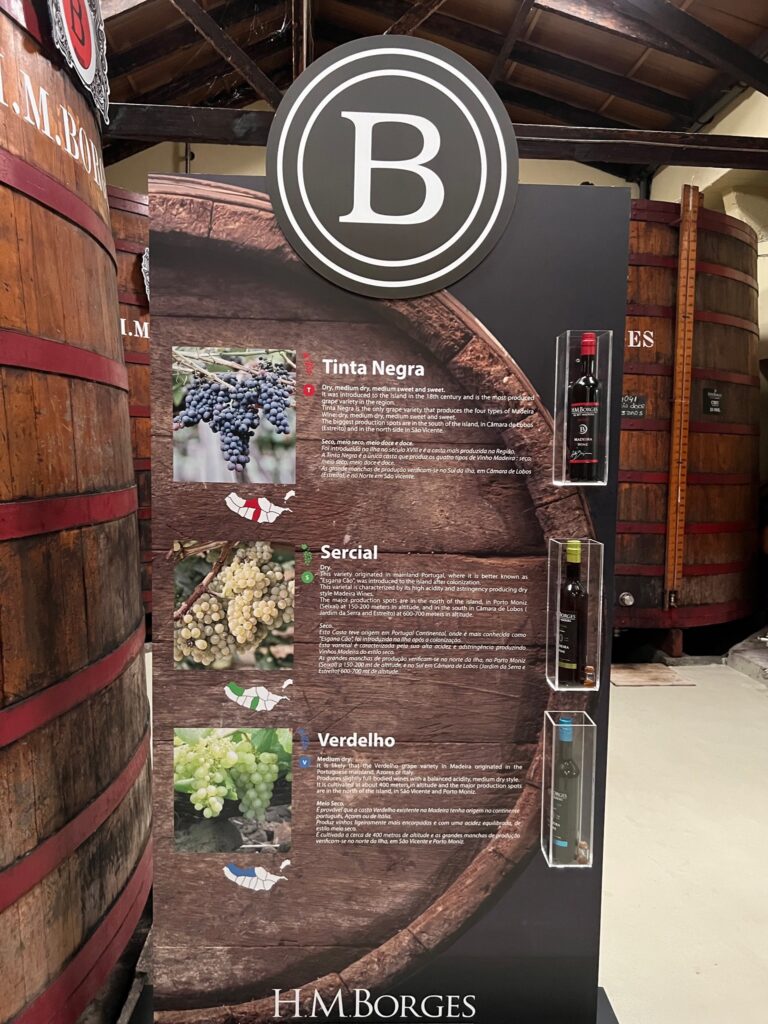
I’m a little loose on these next details due to ambient noise and charming thick accent but I believe the wine is then transported in animal skins of some sort to the facility in Funchal (where we were touring). At that point one of two things can happen to it.
First – it can go into a big vat that has a funky sounding Portuguese name that I cannot possibly recreate here. This vat is designed to mimic the process the wine would go through a few hundred years ago when it would be transported on ship through tropical climates. I believe (again some free interpretation here) that it was an accidental discovery that this journey made the end-result wine taste good but it was a process fraught with a lot of variables that ended up in the majority of the wine not making it back to Madeira.
The vat (with the Portuguese name) heats the wine and sloshes it around like it is onboard a ship. The wine tastes as good as the product that went through the authentic experience but is less likely to sink, get stolen by pirates, or consumed by thirsty sailors.
From the fancy caribbean-ship-mimicking vat it goes into enormous barrels made from Brazilian wood. Each barrel holds around 25,000 liters and one of the barrels that Anna showed us was over 100 years old. The benefit of the Brazilian wood is that it does not mess with the flavor of the end product.
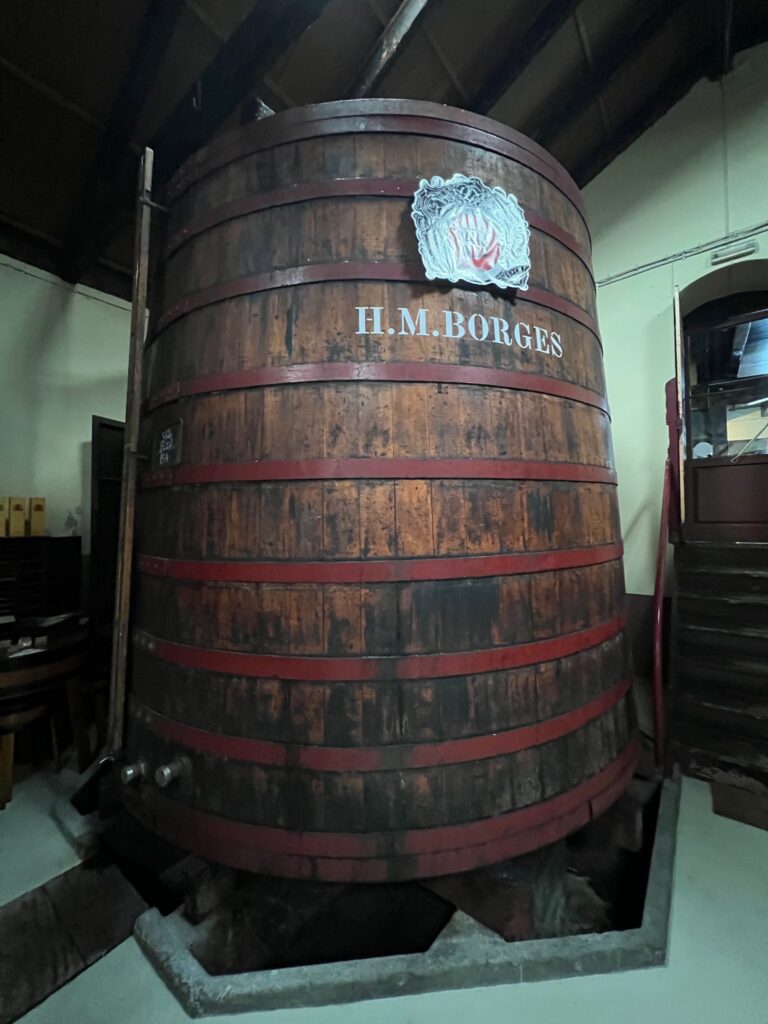
The wine from this first method takes three years. It is cleverly called the three-year wine.
The second way of making the wine is to bypass the fancy heating/sloshing vat and put it directly into much smaller barrels made from oak. There it is aged until ‘he’ cannot get any better. In Anna’s presentation – the grapes use the pronouns she/her and the wine itself uses the pronouns he/him.
Sometimes the wine from the first (heated/sloshing vat) method is put into the smaller oak barrels after spending time in the big Brazilian ones.
I got the impression that the three-year, Brazilian-barrel-only kind is for people like me, without sophisticated palettes, who want to use it in gravies… The good stuff is aged ten, twenty, thirty years.
Thank goodness I only signed us up for the silver tour. Our sample glasses were very generous. And despite Anna’s passion and my newfound appreciation for everything that goes into Madeiran wine – I just don’t know if I am that much of a fortified wine fan. Our first glass was the 3-year variety. A bit of a hair on your chest experience. The second option was a ten-year old which was much smoother. The two samples were plenty for me.
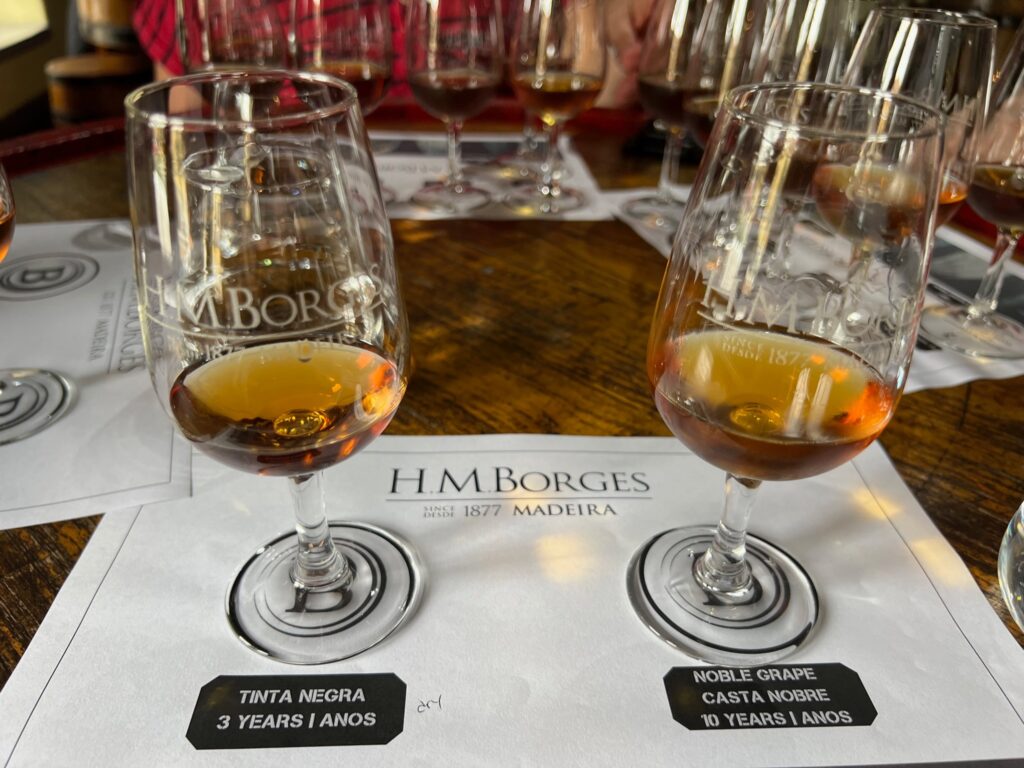
There was a couple from Sweden on our tour and we all shared a table for the tasting experience. They had opted for the six-glass diamond level. They were still plugging away at their samples when we left. I have a feeling that an afternoon nap may show up on their agenda.
I’m glad we went. It was fun and we learned a lot.
Some photos from the tour:
